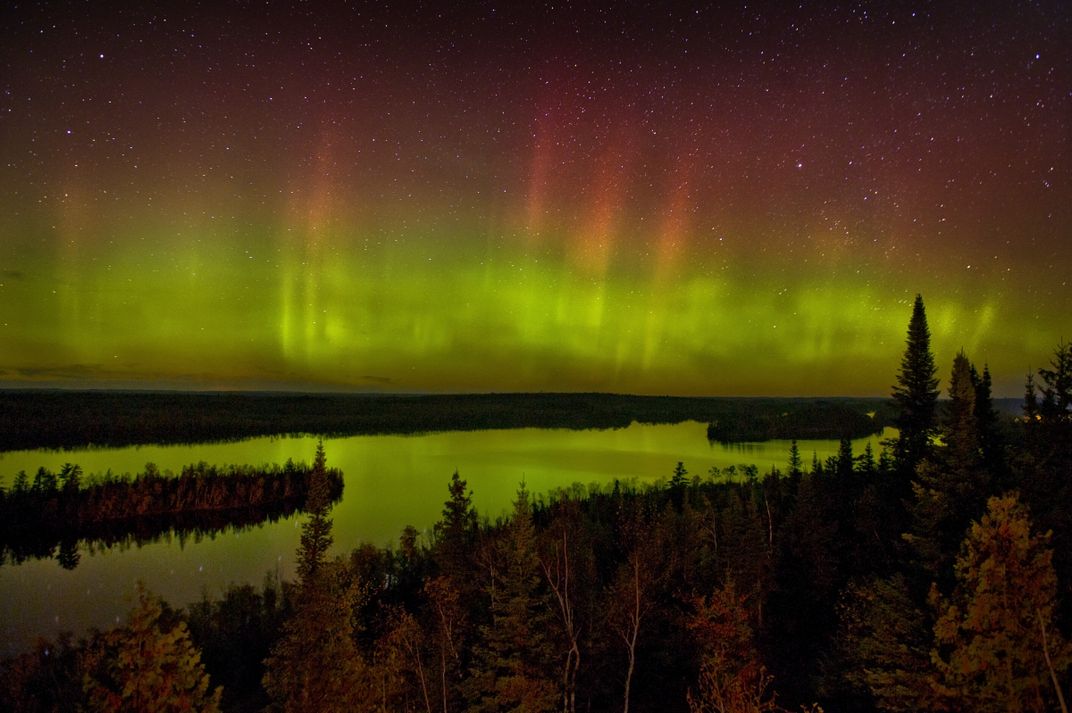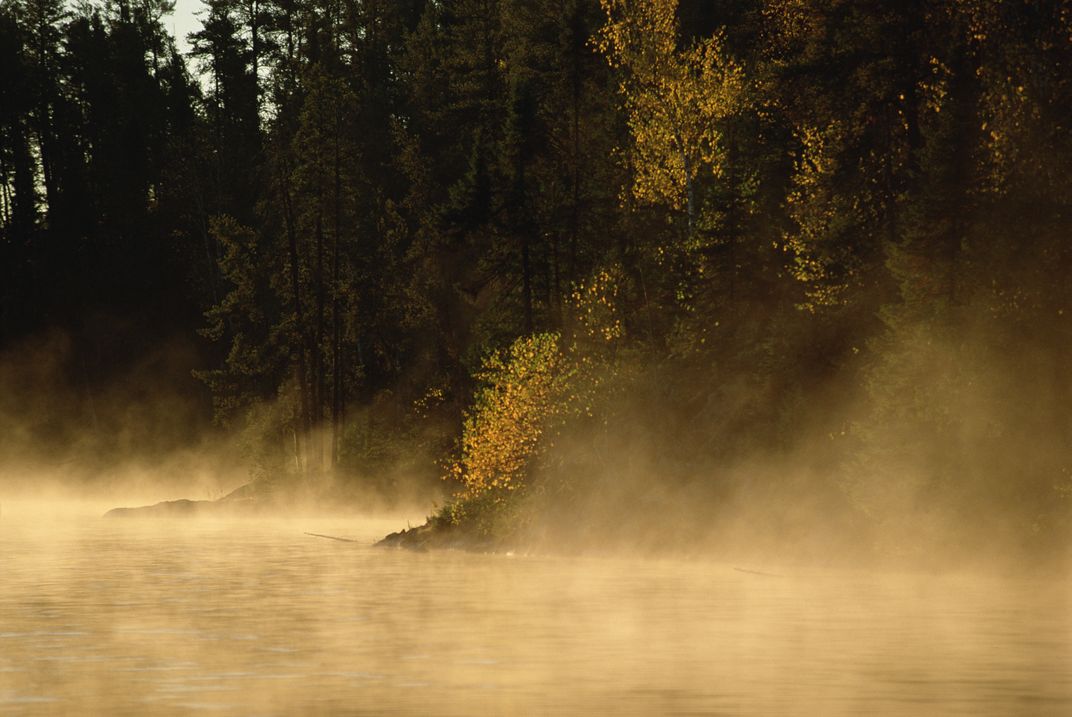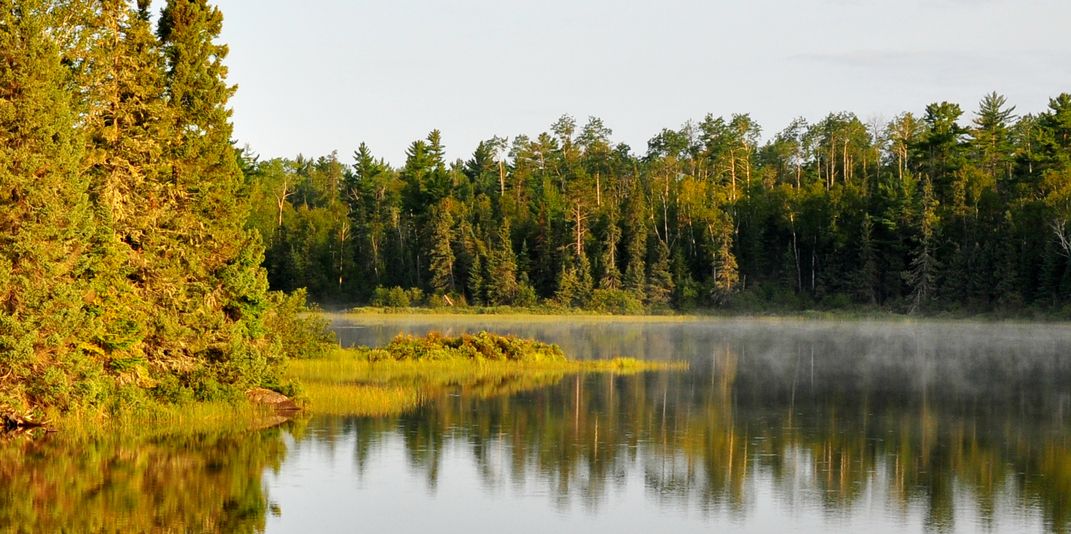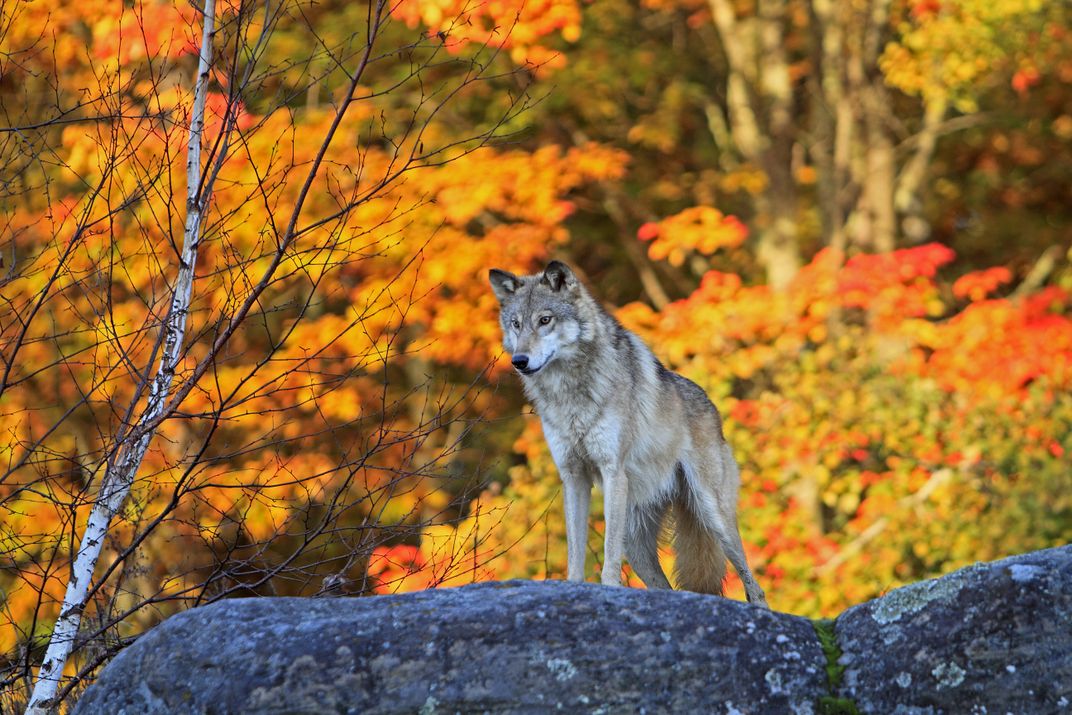Boundary Waters Canoe Area Wilderness
1,175 lakes, Paleo-Indian culture and gray wolves
Location: Minnesota
Size: 812,941 acres
Year Designated: 1964
Fast Fact: The Boundary Waters Canoe Area Wilderness is the most visited wilderness area in America.
The Boundary Waters Canoe Area Wilderness’ beautiful lakes and streams, dotted with islands, were carved thousands of years ago by glaciers, which scraped and gouged rock as they moved and receded. Lakes comprise about 20 percent of the wilderness’ area, with over 1,175 lakes measuring anywhere between 10 acres to 10,000 acres. Visitors can travel long distances over water, across 1,200 miles of canoe routes, recalling the French trappers and explorers of an earlier era.
The Boundary Waters Canoe Area Wilderness is the most visited wilderness area in the country, attracting over 130,000 overnight visitors annually. Before the area was designated as wilderness, it had a rich history of human interaction. Thousands of years ago, it was an important area of cultural and religious significance for Indian populations. The area also includes evidence of a strong European influence, serving as a crucial area for fur traders and early loggers centuries ago.
Even though the area is heavily trafficked by humans, it still supports a thriving population of wildlife, including a stable population of gray wolves. Other animals that live in the area include black bears, moose, beavers, black bears, white-tailed deer and lynx. Within the area’s waters, fish such as lake trout, walleye and northern pike make their home.



